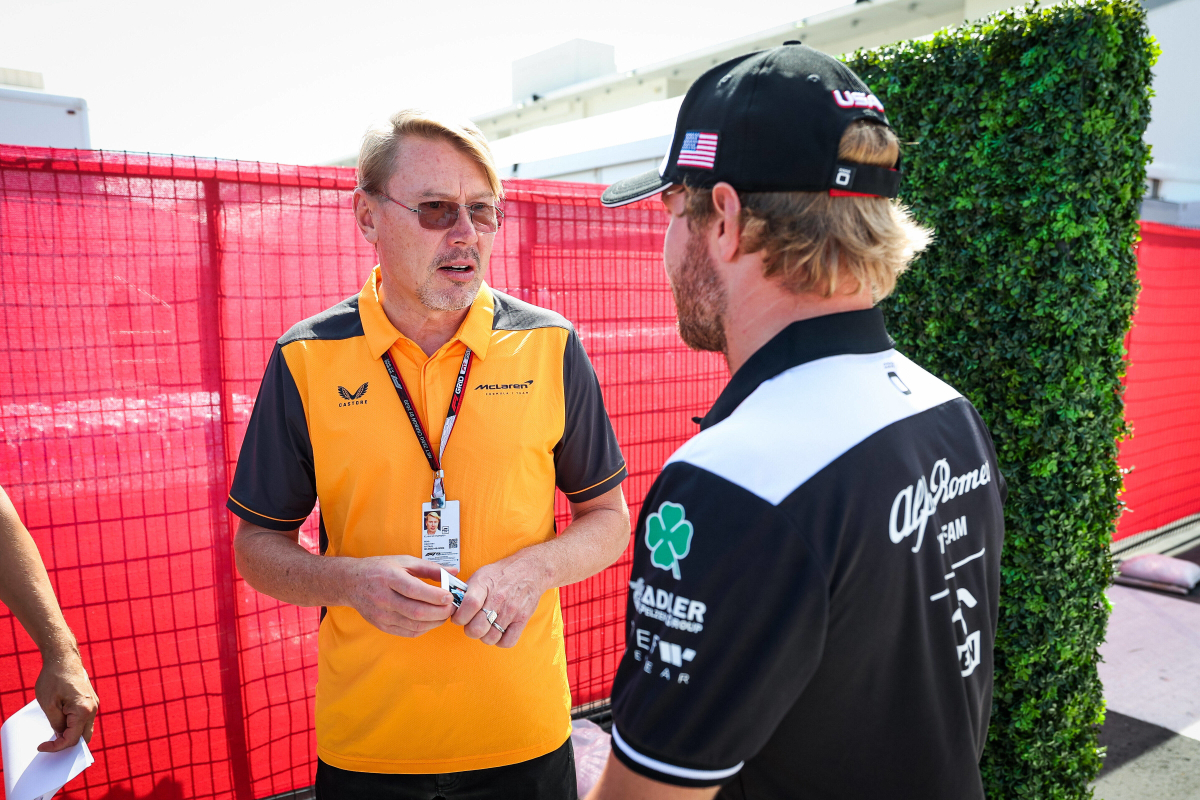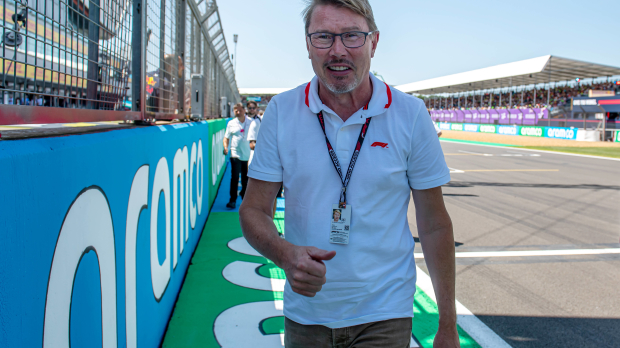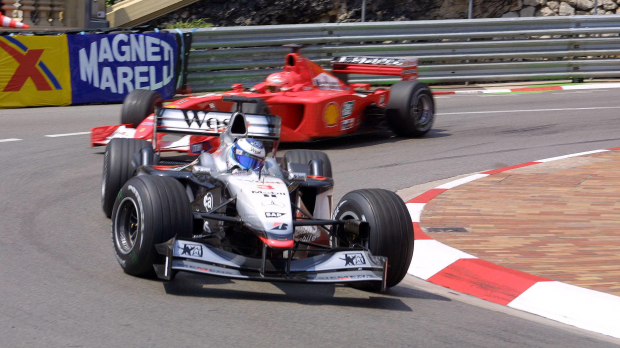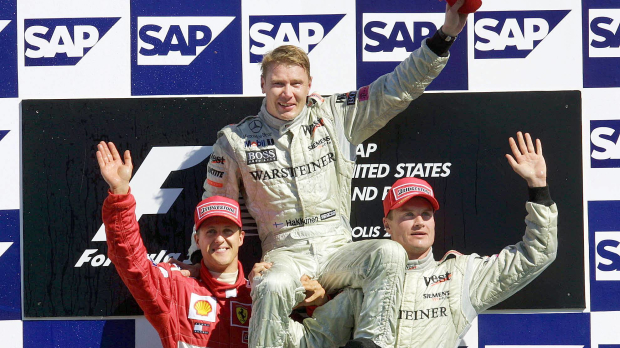
It was one of Formula 1’s iconic duos that will be forever remembered in the sport. It only lasted a few years – but what a few years it was.
But even when it ended after one of Japan’s perhaps less memorable grands prix, it still felt like there should have been a bit more life in it beyond that afternoon in Suzuka. At the time, there was.
This is why Mika Hakkinen’s retirement, now 23 years ago, from F1 really is a bit sad. After the season finale in Suzuka the double world champion competed in the pinnacle of motorsport for the final time. However, on the day – he was still due an eventual return.
The issue was back in 2001, Hakkinen’s planned departure from the sport was seen as a temporary one – a sabbatical as it was described at the time. A year off to recharge the batteries then straight back for the 2003 season firing again and on the charge for a third world championship.
This was understandable. Between 1998 and 2000, he and Michael Schumacher had competed fiercely but fairly for the world championship in one of the most enjoyable eras of the sport.
There is a caveat for 1999, where Schumacher’s title hopes were ended after breaking his legs at the British Grand Prix, but the battles for the world championship in 1998 and 2000 are some of the most fondly remembered in the history of the sport – tying at 1-1.
Michael vs Mika, Ferrari vs McLaren and it all played out with one of the greatest soundtracks of Murray Walker and Martin Brundle in the commentary box. What a time to be an F1 fan.

Mika Hakkinen is still a Formula 1 paddock regularTurning point of Schumacher vs Hakkinen
But that rivalry turned into a one-way demolition almost overnight as the Ferrari winning machine started to really hit its stride at the start of the century.
Hakkinen’s awful start to the 2001 season put him severely on the back foot and when he retired on the final lap of the Spanish Grand Prix in high drama while leading to hand victory to Schumacher, it seemed like his title hopes went up very prematurely along with his Mercedes engine.
The Finn was left on just four world championship points, and 32 behind Schumacher in an era when there were only 10 points available for a win and just six for second place. With Ferrari also proving strong at just about every circuit, it was difficult to see a way back for Hakkinen.
So it proved. Hakkinen didn’t grab his first podium until the eighth race of the season at the Canadian Grand Prix (that only doubled his overall points total to eight).
By the time he ended his 14-race winning drought at the British Grand Prix, there were only six races of the season left. Two races later, Schumacher was crowned world champion for the fourth time. Hakkinen started to hit his stride a little better later in the season, even winning in the United States in his penultimate race. But even then, the victory at Indianapolis was the only time he defeated team-mate David Coulthard on the track all season.

Mika Hakkinen and Michael Schumacher had a strong rivalry
In Japan, his fourth place saw him reach 37 points, which was only a point more than Schumacher had already hit after that dramatic spring afternoon at the Catalunya circuit.
Within one year, the Hakkinen vs Schumacher rivalry had gone from one of the sport’s major focuses to not even a subplot.
What’s more, it marked the end of an era. A double world champion had gone, and Schumacher would run rampant over the opposition for the next three years. Walker hung up his microphone and another 90s favourite in Jean Alesi retired, with Prost Grand Prix (one-time Ligier) also racing for the final time.
It was also a season showing a glimpse of the future – a certain Fernando Alonso at Minardi was already starting to turn heads, and Hakkinen’s replacement Kimi Raikkonen also made his debut, but that’s a story for another day.
Why did Mika Hakkinen retire so early?
Hakkinen’s official retirement though did eventually come through, albeit in July 2002 – and just five days after Schumacher had taken his fifth championship in dominating style at that year’s French Grand Prix.
He had admitted his initial sabbatical was decided at the 2001 Monaco Grand Prix, and a follow up meeting at the same venue a year later with McLaren team boss Ron Dennis confirmed he would not be coming back to the cockpit, hinting at the psychological effect his huge crash at the 1995 Australian Grand Prix had on him.
He said: “I would say the decision was more about the time I want to spend with the family, to see [my son] Hugo growing and spend time with my wife [Erja]. And simply also I didn’t want to hurt myself.
“I’ve been through so much in my career in F1, particularly in 1995, and I did achieve so much that I thought that it’s not worth it any more to push your luck further.”

Michael Schumacher and David Coulthard lift Mika Hakkinen to victory at the US Grand Prix 2001
This was not quite the end of the Hakkinen F1 story though – with a small coda to follow. In 2004, there was interest again from Williams and BAR – both with title ambitions at the time.
However, Hakkinen, around 35 years old at this point, was a little bit perplexed at being used as a backup for the Jenson Button tug-o’-war saga running between the teams and soon stepped away.
The racing bug returned in 2006, when he admitted he was looking to get back into F1 and he tested late in the year for McLaren. Mechanical problems though hit his return to the cockpit and paved the way for Lewis Hamilton to enter the sport in 2007.
The rest after that was history and so too was Hakkinen’s time in the sport as a driver. It was a rather stumbling end to a career which deserved a far greater send-off than that forgettable Suzuka afternoon.